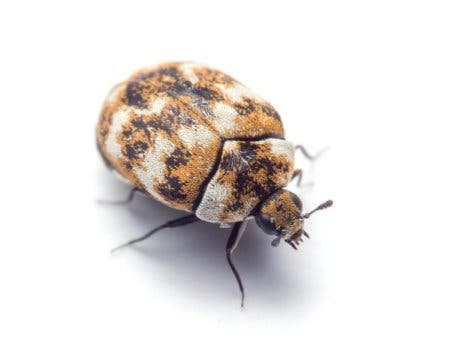Whether we like it or not, our houses are also home to a variety of insects and other little critters. Although arthropods (invertebrates complete with a segmented body, an exoskeleton, and jointed legs) have been living in human dwellings since the dawn of time, we actually don’t know a lot about which ones live with us and why they do so. A study published in Scientific Reports explains what draws insects into homes and which rooms of a house host more bug species.
Many factors could have a role in which bugs co-exist with us, such as the house layout, having pets, or being tidy or messy. Now, we have an idea about which of these factors actually make a difference in determining which bugs are in the house. For this study, 50 urban homes in Raleigh, North Carolina were surveyed for their bugs. Bugs prefer the ground floor — as you go further up stories in a house, there are fewer of them. Carpeted rooms have more diverse arthropod communities because the bugs can become trapped in the carpet hairs or prefer the irregular terrain to bare floors. Rooms with more doors and windows, especially those opened often, promote more different types of arthropods. Because they often have a combination of these factors, living rooms contained the most diverse communities.

Living rooms often contain the most diverse arthropod communities. Image credits: Public Domain Pictures.
Not to fear, most bugs don’t have any effect on humans. The top five most common arthropods found in the house were ants, cobwebs spiders, carpet beetles, dark-winged fungus gnats, and gall midges. Some groups live their whole lives inside, like silverfish and book lice, while others are associated with houses and the outdoors like fruit flies and ladybugs. Typical pests like fleas, termites, bed bugs, and centipedes were extremely rare in their sample.
In general, the types of bugs were similar across rooms with one exception. Basements hosted unique insect communities because the characteristics differ sharply from every other room in the house. They have little light, are underground, humid, and do not have many human-based food sources. Thus they provide a cave-like environment that is more appealing to spiders, millipedes, isopods, camel crickets, and ground beetles.

Carpet beetles were among the most common household arthropods. Image credits: Matt Bertone of North Carolina State University,
“While the idea of uninvited insect roommates sounds unappealing, bugs in houses may contribute to health in a roundabout way. A growing body of evidence suggests some modern ailments are connected with our lack of exposure to wider biological diversity, particularly microorganisms — and insects may play a role in hosting and spreading that microbial diversity indoors,” said Dr. Michelle Trautwein, senior author and the Academy’s Schlinger Chair of Diptera.
Interestingly, being messy didn’t have a big effect on which creepy crawlies find themselves in your house. Only cellar spiders were found more often in more cluttered areas (contrary to the name, they weren’t found typically in cellars). Additionally, houseplants, dust bunnies, pesticide use, and even pets didn’t have a significant effect. However, the lack of a pet effect could be due to the small sample size in this study. Another study that looked at more dust samples across 1462 houses in the US found more diverse arthropod communities and houses with pets. Indoor bug communities are determined more by the outside environment, and which insects, by chance happen to wander into the house.
Journal reference: Misha Leong, Matthew A. Bertone, Amy M. Savage, Keith M. Bayless, Robert R. Dunn, Michelle D. Trautwein. The Habitats Humans Provide: Factors affecting the diversity and composition of arthropods in houses. Scientific Reports, 2017; 7 (1) DOI: 10.1038/s41598-017-15584-2









